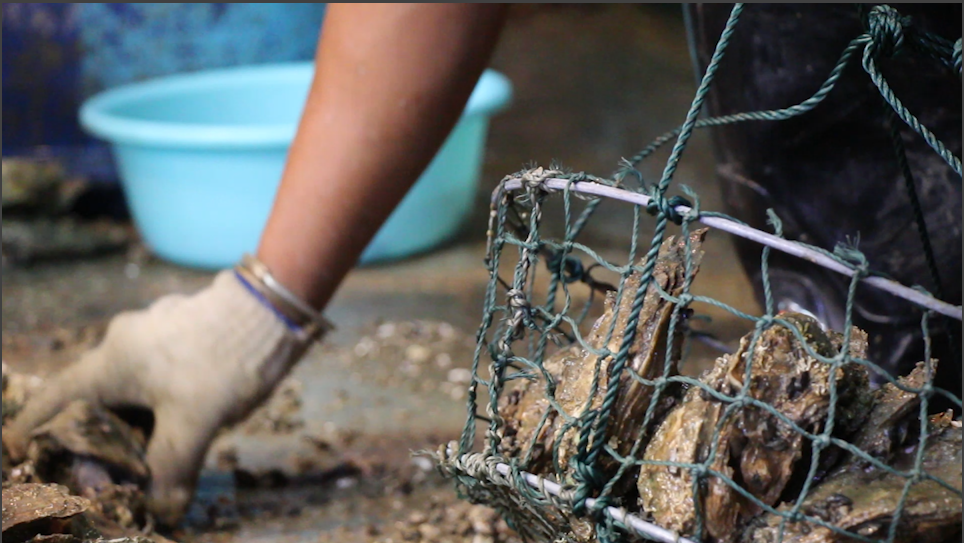Pollution threatens traditional oyster culture industry but farmers press on
Reporters: Donna Shiu, Godric Leung, Macau Mak
Editor: Cherry Wong
Oyster culture has been practiced in Hong Kong for around 200 years. A group of oyster farmers keep on running their business in Lau Fau Shan.
The oyster farmers wake up early every day and take to the sea to check the oyster rafts in the middle of Deep Bay. They culture oysters by placing them with wood pieces and concrete tiles suspended from bamboo rafts.
Tsang Kam-tong, an oyster farmer, says his father cultured oysters by placing rocks and concrete tiles on the mud flat. But he prefers the raft culture method to the traditional one because he can grow more oysters of better quality..
However, development in nearby Guangdong has adversely affected water quality in Deep Bay, raising concerns about the safety of local oysters.
Unlike their foreign counterparts, local oyster farmers do not have the resources to install purification tanks for their bivalves. Still, they insist their oysters are safe to eat. Tsang says oysters are sensitive to water quality and will die if the water is polluted.
Another oyster farmer, Chan Kam-to says oyster sales have declined since the 1980s, the golden decade for the industry. But Chan adds the safety issue is not the reason for the fall. He says customers now have more choice when it comes to seafood varieties, and they may opt for imported oysters, instead of the local ones.
However, Leung Ka-kuen, a food columnist, says local oysters are tastier than the American ones. He points out that local oysters are more expensive, and a reason local restaurants import foreign frozen oysters is because they are cheaper.
Although oyster sales are declining in the local market, Leung explains that a large proportion of local oysters are now sold to the mainland Chinese who have become more affluent.










































